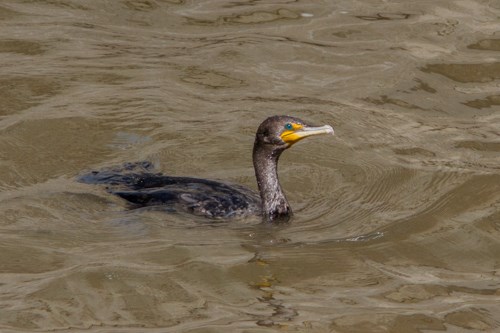
NPS/Gordon Dietzman IntroductionDouble-crested cormorants are large, dark-colored birds that make their living diving beneath the surface of the water and pursuing fish, their favorite quarry. While clumsy-looking on land or when on favorite perches, cormorants are both agile and swift in the water. While feathers are waterproof simply due to their physical structure, the cormorant’s feathers are “wettable,” and quickly become water-logged, reducing the bird’s buoyancy and increasing its swimming efficiency. In addition, the bones of cormorants, unlike most other birds, are dense and heavy. While both adaptations help the bird pursue its swift underwater prey, heavy bones and water-logged feathers makes flight more difficult. Cormorants are often seen holding their wings spread to facilitate drying (not warming as in other birds) and when taking off must often “patter” across the surface of the water to build up sufficient flying speed before taking to the air. Fascinating Facts
Identification
| |
Last updated: September 28, 2021
